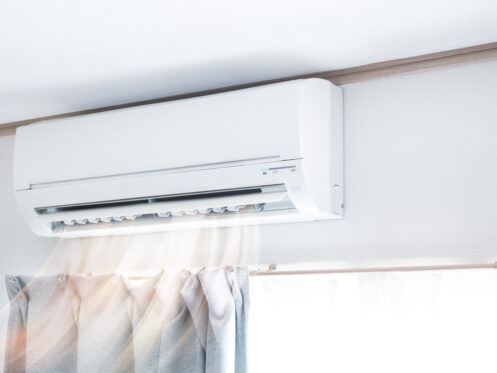A growing number of homeowners are realizing the benefits of ductless mini-split systems for their home’s heating and cooling needs. You can tailor your home’s environment, save money on energy, and have more freedom with these ductless systems. If you want your mini-split system to be as comfortable and functional as possible, however, there are a number of things to think about before making your final decision. To help you make a well-informed selection, let’s take a look at the nine most important factors to consider.
1. Room Size and Cooling Capacity
Identifying the room’s dimensions and cooling needs is the first step in choosing a mini-split system. Find out how many square feet of area you need to chill. Different mini-split systems have different BTU (British Thermal Unit) capabilities. For maximum efficiency and comfort, it’s best to match the cooling capacity with the room size.
2. Energy Efficiency and SEER Rating
Find out how energy-efficient possible mini-split systems are by looking at their SEER rating. An increase in the SEER rating is indicative of improved efficiency, which in turn reduces energy consumption and your home’s cumulative effect on the environment. To guarantee long-term cost-effectiveness, opt for a system with an excellent SEER rating.
3. Zoning Requirements
Give some thought to your home’s zoning requirements. You can set the temperature of certain rooms or zones separately using a mini-split system’s configurable zoning. By limiting cooling to just the occupied areas of your home, this adaptability improves both comfort and energy efficiency. Before choosing a system, you must figure out how many interior units your home will need to achieve your desired temperature control preferences.
4. Maintenance Requirements
Explore the maintenance requirements of different mini-split systems. While these systems generally require less maintenance than traditional HVAC systems, it’s crucial to understand any specific care they might need. Choose a system with easily accessible filters and components for straightforward maintenance tasks.
5. Installation and Placement
Check the unit’s adaptability in terms of location and how easy it is to install. Installing a mini-split system is usually less complicated than a standard HVAC system; however, this is not always the case. Think about whether the system is best left to the pros or if you can handle the installation yourself (it’s almost always best to let a professional handle the installation). To maximize efficiency and curb appeal, you should also consider where to put your interior and outdoor units.
6. Noise Level
Before installing a mini-split system, make sure it won’t be too noisy, particularly in bedrooms or other peaceful spaces. In order to choose a machine that operates quietly, you should check its decibel (dB) rating. Manufacturers make it easy to assess the noise level of a system because they give noise level information for both indoor and outdoor components.
7. Brand Reputation and Reviews
To learn more about the efficiency, dependability, and lifespan of certain mini-split types, read reviews written by actual customers. You increase your chances of getting a long-lasting system from a respected company if they have good ratings. Try to choose companies that have a reputation for providing excellent products and excellent service.
8. Budget and Cost Considerations
Take into account the upfront and ongoing expenses of purchasing and installing your mini-split system when creating a budget. The cost of a mini-split system might vary, although it usually costs less than a standard HVAC system. Find a happy medium between the features and functionality you want and your budget. Think about how much money you’ll save in the long run by switching to more energy-efficient versions.
9. Professional Installation and Warranty
If you want your system to run as efficiently as possible, you need to hire a specialist. The system’s optimal operation and lifespan depend on a professional installation. Be sure to also look into the manufacturer’s warranty. A warranty allows you to rest easy, knowing that a comprehensive guarantee protects your investment.
By carefully considering the aspects mentioned above, you can select a mini-split system that aligns with your home’s unique needs, providing efficient and customized comfort year-round. Consulting with an HVAC professional can offer personalized advice based on your specific situation and preferences. E.P. Omega Air Conditioning LLC excels at helping El Paso homeowners with a variety of heating and cooling services, including mini-split installations. We also provide HVAC maintenance programs, duct cleaning, sheet metal fabrication, and more. Give us a call today to learn more about choosing the best mini-split system for your home.
